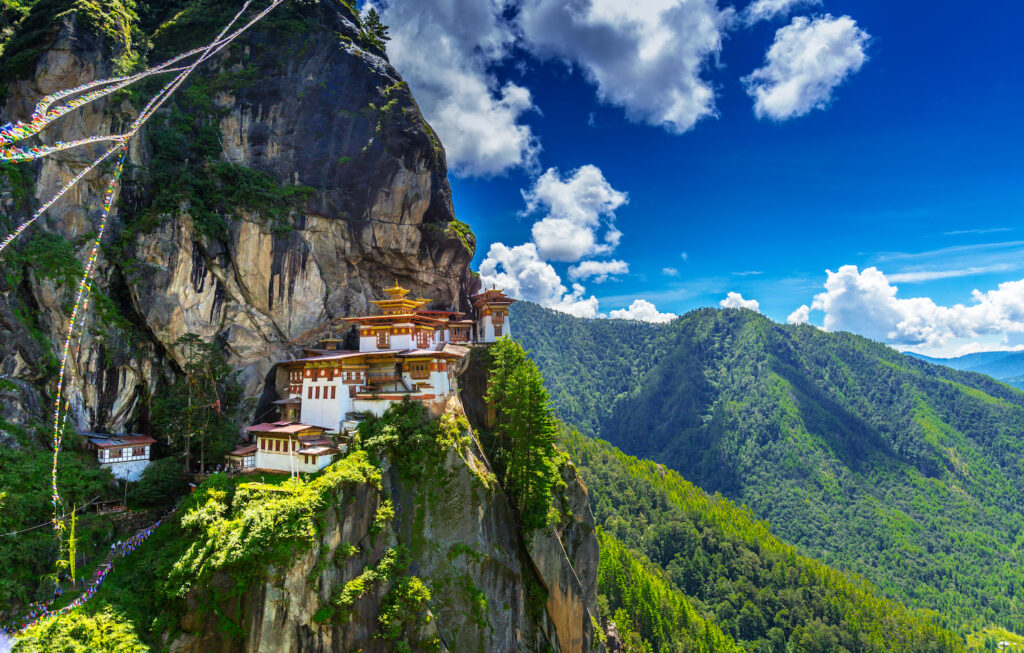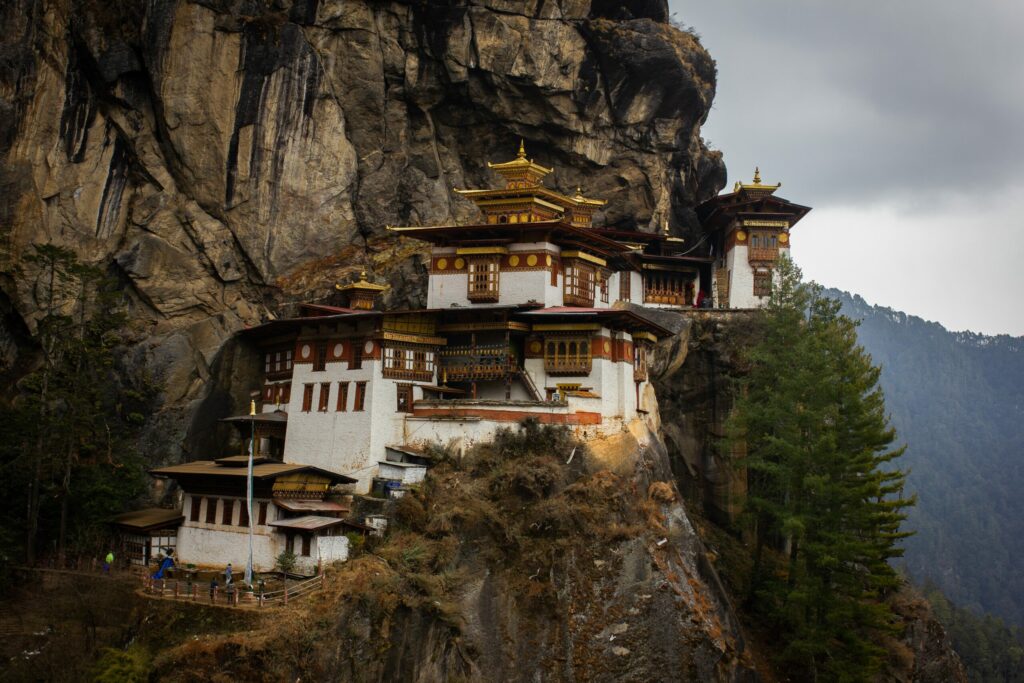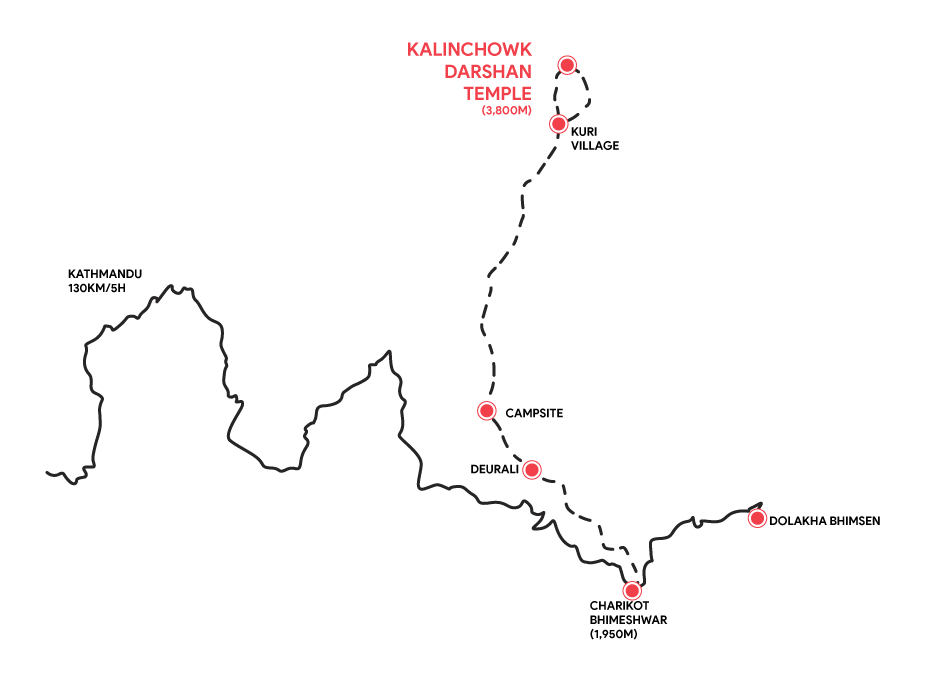Enveloped by untamed nature and endless mountain ranges, Bhutan is a small, yet captivating country, untouched by colonization. Influenced by Vajrayana Buddhism, with shades of Tibetan Buddhism, Bhutan reveres revered saints of Tibet, creating a unique spiritual atmosphere. The country showcases its beauty through festivals that punctuate the year, celebrating its authentic Bhutanese culture.
With 20 districts, each housing at least two impeccably preserved monasteries, Bhutan is a treasure trove of iconic landmarks. Remarkably, it stands as the only carbon-negative country globally, ensuring a crisp, fresh environment that rejuvenates the soul.
Bhutan’s allure lies in its adventure-packed landscapes and extraordinary activities, offering thrilling vistas and novel experiences. The cultural tour unveils Bhutan’s prominent landmarks, inviting visitors not only to witness its beauty but also to embark on a spiritual journey. The journey includes exploration of significant Buddhist monuments, perched on cliffs with mind-bending architectural designs, providing a paradise for enthusiasts of history and architecture.
This expedition isn’t just about sightseeing but also an opportunity to connect with the locals, immersing oneself in their traditions. Throughout the 8-day trip, a certified tour guide accompanies you, offering insights into heritage sites and the country’s history. The guide becomes a valuable resource for those curious about Bhutan’s culture, providing a lifetime experience of refreshment and self-discovery in this enchanting Himalayan kingdom.
Bhutan Cultural Tour Attractions
Bhutan, a land shrouded in mystery, beckons visitors with its awe-inspiring landmarks, rich history, and vibrant culture. Nestled amidst endless mountain chains, the country offers pristine nature and well-preserved traditions that captivate the senses. Bhutan’s Buddhist culture permeates the air, with mesmerizing chants of monks and enchanting religious structures.
Tachogang Lhakhang, situated along the Paro-Thimphu highway, holds spiritual significance as it was built by the revered saint Thangtong Gyalpo, inspired by a vision of a spiritual horse. The temple features an iconic iron chain suspension bridge adorned with prayer flags, providing a picturesque setting with breathtaking views of snow-capped mountains and valleys.
In Thimphu, the capital, Tashichho Dzong, also known as Thimphu Dzong, stands as the largest landmark. Positioned on the northern edge, this fortress on the banks of the Wang Chhu River is referred to as the ‘Fortress of the Glorious Religion.’ Aside from its captivating architecture, Tashichho Dzong serves as the seat of the King and key government officials, offering a glimpse into the country’s fascinating history.
Explore Thimphu
Established in 1967, the National Library of Bhutan was created to safeguard the nation’s literary heritage, emphasizing cultural and religious treasures. Initially housed in Tashichho Dzong, it later relocated to Changangkha in Thimphu. Home to invaluable scriptures and historical documents, it serves as a key source for Bhutanese history, religion, ancient medicine, and world-class art.
The Motithang Takin Preserve, also known as the mini zoo, serves as a natural habitat for Bhutan’s national animal, the Takin. Originally a zoo, it was transformed into a preserve due to the King’s decree against animal captivity in this Buddhist country. The preserve, resembling the Takins’ natural environment, also features other wildlife like Musk deer and Barking deer, with plans for expansion to include rare Bhutanese species such as the Red Panda and Himalayan Serow.
Dochula Pass, situated at 3150m on the Thimphu to Punakha Road, boasts 108 Chortens or Stupas. A popular stop 30 km from Thimphu, it offers breathtaking views of the valley and snow-capped mountains. Ideal for a short hike surrounded by dense forest, Dochula Pass is a favorite spot for a refreshing tea break, providing a stunning panorama of lush green valleys and endless mountain chains on sunny days.
Punakha Awaiting!
Punakha Dzong, situated at the confluence of Bhutan’s Mo Chhu and Pho Chhu rivers, was built by Zhabdrung Ngawang Namgyel Wangchuk in 1638. As the second largest and oldest Dzong in Bhutan, it hosts the annual Punakha Tshechu festival, showcasing Bhutanese art through religious murals.
Talo Sanga Choling, a significant Drukpa Kagyu monastery near Paro, Bhutan, was founded by Kongtrul Jigme Singye. Linked to the mind manifestation of Zhabdrung Ngawang Namgyel, it’s known as Talo Geompa.
Chimi Lhakhang, the Fertility Temple in Punakha, was built in 1499 by the 4th Drukpa hierarch, Ngawang Choegyel. Located near Lobesa, it is adorned with beautiful prayer flags and surrounded by a village with phallic paintings on house exteriors.
Chendebji Chorten, en route to Trongsa, resembles Kathmandu’s Boudhanath stupa. Built in the 19th century by Lama Shinda, it is believed to be on the spot where an evil spirit was subdued.
Trongsa Dzong, one of Bhutan’s largest and impressive dzongs, stands on a cliff overlooking Mangde Chhu river gorge. Hosting the Trongsa Tshechu annually, the festival celebrates Buddhism’s triumph over evil forces with masked dancers and the unveiling of sacred Thangka paintings.
Gangtey Attractions
Gangtey Goemba, also known as Gangtey Gonpa, stands at an elevation of 3000m in Bhutan’s Wangdue Phodrang Dzongkhag. Established in 1613 by Peling Gyalse Rinpoche, it is affiliated with the Nyingma school of Buddhism. Offering a breathtaking view of Phobjikha valley, this monastery holds both religious significance and a picturesque landscape. The valley, at 2900m, serves as the winter habitat for Tibetan Black Necked cranes, migrating from Tibet. A visit in November allows witnessing these rare birds. The Black Crane Information Center provides essential insights.
Phobjikha valley, a glacial expanse, is home to the Gangtey monastery and the winter roosting ground for Tibetan Black Necked cranes. These migratory birds, arriving from the Tibetan plains, find respite in the milder climate at an elevation of 2900m. Part of the Black Mountain National Park, the valley is a must-visit, especially in November, for a glimpse of these magnificent cranes. Don’t miss the Black Crane Information Center for comprehensive details.
Simtokha Dzong, situated 5 kilometers south of Thimphu, Bhutan, is officially called Sangak Zabdhon Phodrang. Constructed in 1629 by Shabdrung Ngawang Namgyal, it is now repurposed as an institute for Language and cultural studies. Apart from its heritage status, it holds a captivating mythology, being built atop a demon’s stomach, as reflected in its name – the Dzong on top of the demon’s stomach.
Paro Attractions
Tiger’s Nest Monastery, perched at 3120m, is a breathtaking marvel clinging to a sheer cliff, revered by Buddhists worldwide. Its audacious architecture defies norms, captivating visitors who embark on the challenging hike to witness its spiritual splendor firsthand.
Rinpung Dzong, also called Paro Dzong, stands as Bhutan’s quintessential landmark, greeting travelers upon arrival at Paro International Airport. Its grandeur, showcased by massive whitewashed walls, commands the valley’s attention, inviting passage over Nemizaram River via a traditional bridge to explore its majestic interiors.
Kyichu Lhakhang, or Jowo Temple of Kyichu, boasts a rich history dating back to the 7th century when Tibetan King Songtsen Gampo built it overnight to quell a local demon’s havoc. As one of 108 temples constructed for this purpose, it holds deep spiritual significance, attracting pilgrims and revered saints, including Guru Rinpoche, over centuries.
What to Expect from Bhutan Cultural tour?
Embark on an enchanting journey through Bhutan, where the clouds’ part to reveal a land steeped in mystery. Arriving in Paro, the majestic Paro Dzong greets you, its grandeur dominating the valley. Your guide, clad in traditional attire, welcomes you to a world of fresh air and boundless beauty.
Journeying to Thimphu, Bhutan’s capital, you’ll marvel at the absence of traffic lights, the smooth roads guiding you to iconic landmarks. From imposing fortresses resonating with divine energy to intricate Bhutanese craftsmanship, each sight unveils a tapestry of history and culture. Your local guide, a fountain of knowledge, enriches your experience with tales of Bhutan’s rich heritage, a testament to its enduring allure.




